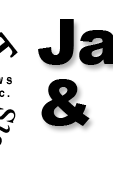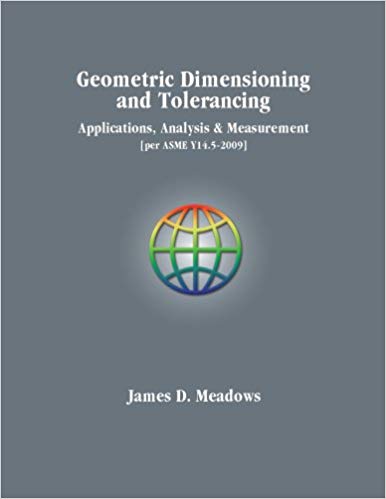|
13 Position with Fixed Fastener
Assemblies and Projected Tolerance Zones
-Tolerancing Mating Parts in a Fixed Fastener Assembly
-Projected Tolerance Zones and How they are Measured
-Datum Feature Shift/Pattern Shift
-Alternate Method Using Chain Lines to Show Projected Tolerance Zones
-Calculating Clearance Hole Sizes Needed Without Projected Tolerance Zones
-Alternate Method Using Chain Lines to Show
Projected Tolerance Zones
14 Tolerancing Mating Parts in a
Floating Fastener Assembly
-Floating Fastener Assembly Condition (Radial Hole Patterns)
-Assigning Datum Features to Mating Parts with Radial Hole Patterns
-Calculating Position Tolerance
-Two Single Segment Position Tolerancing
-Calculating Minimum Wall Thicknesses
-Accumulative Datum Shift on Mating Parts in an Assembly
-Tolerance Zones and Their Movement with Two Single Segment Position
15 Direct vs. Indirect
Relationships
-Overview
-Tolerancing Mating Parts Holding Function Directly and Indirectly
-Switching Datums in Mid-Stream
-Unique Effects of Utilizing the LMC and LMB Concepts
-Wall Thickness Calculations
16 Datum Targets
-Flexible Parts, Datum Targets and Partial Datum Features
-Sheet Metal Panels and GD&T Sheets
-Equalizing Datums
-Moveable Targets, Finding the Datum Planes and Fixturing
-Vector Symbols
-Datum Target Symbols for Spherical Diameters
-Centerplane Datums
-Spherical Tolerance Zones
17 Datum Feature Scheme
Choices
-Datum Feature Patterns and Profile
-Simultaneous Requirements
-Compound Datum Features of Size
-Secondary and Tertiary Datum Features of Size
-Finished Machining Requirements for a Cast Part
18 Flexible Parts
-Flexible Parts and Inspecting Them in the Way They Work
-Temporary Datum Features
-Common Misconceptions
-Free State Variation in Sheet Metal Parts
-Specifying Restrained State Inspection
-Fixturing Sheet Metal Parts
-Profile ALL OVER Controls and What They Mean
19 Position Boundary Concept
-Position Boundary
-Elongated Holes
-Functional Gages and Virtual Condition Boundaries
-Tolerancing Hoses, Pipes and Tubing with Positional Boundary
-Tolerancing Oddly Configured Features with Positional Boundary
-Oddly Configured Datum Features and How to Represent them in Gages
-Tolerance Zones vs. Boundary Concept Explanation
-Rectangular Tolerance Zones for Round Holes
-Bi-directional Position Tolerancing, Polar Coordinate Method
20 Why Use GD&T
-Multiple Interpretations of Simple Plus and Minus Tolerances
-Converting from Plus and Minus to Composite Position Tolerancing
-Calculating the Position Tolerance for a Composite Position Control
-Minimum Wall Thickness Calculation for Composite Position Tolerances
-Composite Tolerancing for Coaxial Hole Patterns
-Minimum Wall Thickness Calculations for Coaxial Hole Patterns
-Composite Position Tolerancing with 3 Levels of Control
-Differentiating Between Features of Similar Size and Shape
21 Composite vs. Two Single
Segment Positional Tolerancing
-Composite vs. Two Single Segment Positional Tolerancing
-Similarities
-Differences
-One Level Tolerancing vs. Composite Tol. and Simultaneous Requirements
-Two Single Segment Position Controls
-Refining Geometric Controls to be More Cost Effective
22 Dimensioning and
Tolerancing of Gages
-Dimensioning and Tolerancing of Gages per ASME Y14.43-2011
-GO Gages
-NOGO Gages
-Functional Gages
-Calculating to Determine Good Parts Rejected or Bad Parts Accepted
-Steps in the Development of a Dimensional Inspection Plan
23 Tolerance Stack-Up
Analysis
-Tolerance Stack-Up Analysis for a Fixed Fastener Assembly
-Rules
-Calculating Gaps; Working the Route
-Calculating Inner and Outer Boundary Means and Their Tolerances
-Plugging the Numbers into the Number Charts
-Calculating Statistical Tolerancing
-Root Sum Squares
-Bender Factor
-Reintegrating the Statistical Tolerancing into the Assembly
-A Simpler Way to Reintegrate the Statistical Tolerance
-More Statistical Formulas and Symbols
-Glossary of Statistical Terms
24 How to be Specific in
Calculating and Specifying Statistical
Requirements
for size and Geometric Tolerancing
-Some Useful Definitions When Geometric Tolerances are Used
-Symbology for SPC Formulas
-Arithmetic Mean; Normal Distribution of Tolerance and the Standard
Deviation; Statistical Probability for Tolerance Stack-Up Analysis for
Positional Geometric Tolerances
-Calculating a Standard Deviation
-Predicting the Amount of Tolerance to be Consumed by Manufacturing
-Charts and Tables
25 Tolerance Stack-Up
Analysis in a 5-Part Assembly
-Determining a MIN GAP in a Rotating Assembly
-Factors vs. Non-factors
-Alignment
-Dealing with Threaded Features
-Calculating the Pertinent Numbers
-Simplifying the Assembly Drawing
-Creating a Line Graph with Numbers to Calculate the Minimum Clearance
-Adding the Negative and Positive Designations
-Wall Thickness Calculations and Choosing the Pertinent Tolerances
-Single Part Analysis
-Using Profile Tol. and Separate Requirements for Accumulated Error
26 Tolerance Stack-Up
Created during Manufacture due to Changing Set Ups
-Where the Tolerance Accumulation Comes From
-Proportions and Trigonometry
27 GD&T as a Language
-To Properly Read a Drawing
-Reading the Feature Control Frames as Sentences
-Profile
-Tolerance Zones and Pattern Shift Zones
-Reading Two Single Segment Controls
-Using Gages to Visualize a Geometric Tolerance’s Meaning
-Reading a GD&T Sheet
-Optional Tolerancing Approaches for Similar Results
-Gears
-Pattern Shift, Where it Comes From and How it Effects the Workpiece
-Bonus Tolerance, Virtual Condition and Zero Positional Tolerances
-Threads, Gears and Splines
-Sequential Tolerancing Using the Simultaneous Requirement Rule
28 Definitions |









